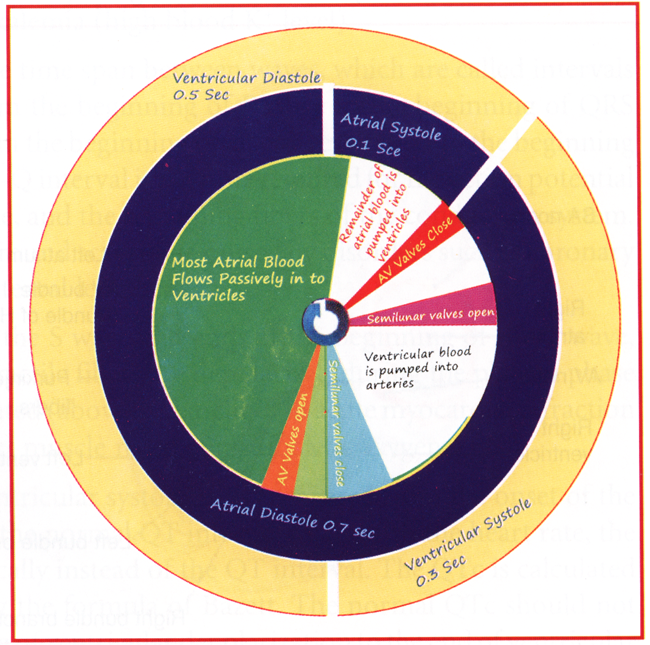The cardiac cycle may be depicted in a circle, because one heartbeat follows another, and the beginning of atrial systole is at the top (12 o'clock) (Fig. 1-4).
To start with the atria which are in the midst of diastole and the ventricles have just completed their systole. The entire heart is relaxed and the atria are filling with blood. Blood is constantly flowing from the veins into both atria. As more blood accumulates, its pressure forces open the right and left AV valves. Two-thirds of the atrial blood flows passively into the ventricles (which brings us to 12 o'clock); the atria then contract to pump the remaining blood into the ventricles. Following their contraction, the atria relax and the ventricles begin to contract. Ventricular contraction forces blood against the flaps of the right and left AV valves and closes them; the force of blood also opens the aortic and pulmonary semilunar valves. As the ventricles continue to contract, they pump blood into the arteries. The blood that enters the arteries must all be pumped. The ventricles then relax, and at the same time blood continues to flow into the atria, and the cycle begins again (Scanlon, 2007).

Fig. 1-4. The cardiac cycle depicted in one heartbeat
 Prof. J.P.N. Mishra
Prof. J.P.N. Mishra
